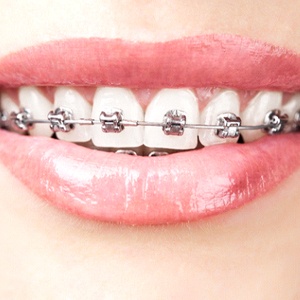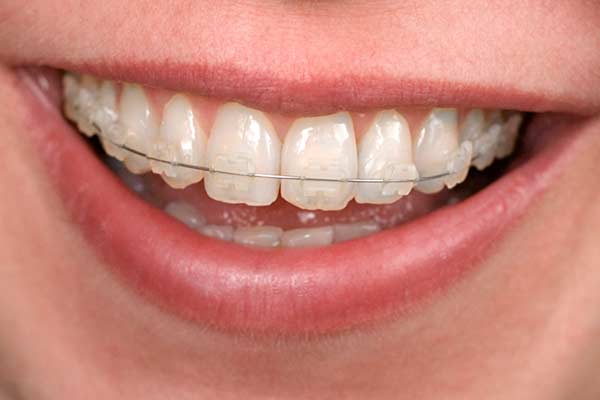Comprehensive Overview to Orthodontics Procedures for Dealing With Dental Imbalances
In the world of orthodontics, the trip to accomplishing a flawlessly lined up smile entails a myriad of treatments customized to fix dental misalignments. From typical braces to unnoticeable aligners and also surgical choices, the field of orthodontics provides a variety of solutions to address differing levels of dental abnormalities. Comprehending the details of each procedure, including their devices, benefits, and potential drawbacks, is essential in making informed choices concerning one's orthodontic treatment. As we navigate with the comprehensive guide to orthodontic procedures for fixing dental imbalances, the detailed information of each method will unfold, clarifying the course towards a functional and harmonious dental positioning.
Orthodontic Procedures Overview

Along with traditional braces and clear aligners, orthodontists may likewise advise other treatments like headgear, palatal expanders, or retainers to address particular alignment concerns (cumming orthodontics). These procedures are tailored to every patient's unique demands and might entail a mix of therapies to achieve the wanted outcomes. Normal modifications and monitoring are vital components of orthodontic therapy to make sure progression is on track and to make any kind of essential adjustments in the process. By undergoing orthodontic procedures, individuals can not only achieve a straighter grin yet additionally improve their total oral health and wellness and function.
Standard Braces: Exactly How They Function
When taking into consideration orthodontic treatments for dental imbalances, typical dental braces attract attention as a time-tested approach for remedying teeth positioning. Traditional dental braces contain braces, wires, and bands that interact to use continual stress on the teeth, slowly moving them right into the preferred placement. The brackets are affixed to the teeth using a special adhesive, and the cables are threaded via the brackets. By adjusting the tension of the wires, orthodontists can regulate the instructions and pressure related to each tooth, leading them right into appropriate placement with time.
One key element of exactly how standard dental braces job is the procedure of bone remodeling. As pressure is put on the teeth with the braces, the bone bordering the teeth is improved to sustain the new tooth settings. This makeover is important for the long-term stability of the dealt with positioning. Clients will certainly require normal changes at the orthodontist's office to make sure the dental braces remain to use the correct stress for effective teeth activity.
Undetectable Aligners: Disadvantages and pros
These clear, custom-made trays are basically undetectable when worn, making them an appealing option for people seeking an extra visually pleasing orthodontic therapy. Individuals can remove the aligners prior to consuming or brushing their teeth, reducing the threat of food getting stuck in the device and simplifying the cleansing process.

Surgical Orthodontic Options
Surgical interventions in orthodontics present viable options for attending to intricate oral imbalances that might not be successfully settled via standard orthodontic therapies. While conventional braces and undetectable aligners can fix many orthodontic issues, particular situations need surgical intervention to accomplish optimal outcomes. Surgical orthodontic choices are typically suggested for severe malocclusions, substantial jaw disparities, and cases where the underlying bone framework requires alteration to achieve proper placement.
One typical medical orthodontic procedure is orthognathic surgical procedure, which involves rearranging the jaws to remedy functional concerns such as difficulty speaking or eating. This surgery is usually performed in cooperation with an orthodontist who helps align the teeth dental examination prior to and after the procedure. Surgical orthodontics might additionally entail treatments to subject influenced teeth, eliminate excess gum cells, or improve the jawbone to produce an extra harmonious face profile.
Prior to thinking about medical orthodontic choices, patients undergo a thorough evaluation to figure out the necessity and prospective advantages of such treatments. cumming orthodontist. While surgery may seem daunting, it can considerably boost both the function and looks of the smile in cases where conventional orthodontic treatments fall short
Retainers and Post-Treatment Treatment

Failure to abide with post-treatment care directions can result in relapse, where the teeth slowly move back towards their initial placements. Regular retainer wear, great oral hygiene, and regular dental examinations are vital for preserving the results attained via orthodontic surgical treatment and making sure the long-lasting stability of the dealt with oral positioning.
Final Thought
In final thought, orthodontic treatments supply various options for remedying oral imbalances. Surgical orthodontic choices are offered for much more serious misalignments. Overall, orthodontic procedures can properly improve dental health and visual look.
As we browse through the extensive guide to orthodontic procedures for dealing with dental imbalances, the elaborate information of each technique will certainly unfold, dropping light on the course toward a useful and harmonious dental placement. - cumming invisalign
One try these out of the most typical orthodontic therapies is the use of dental braces, which are composed of steel brackets and cables that use mild pressure to slowly move teeth right into the wanted position.When considering orthodontic treatments for dental imbalances, typical dental braces stand out as a time-tested method for fixing teeth placing. Additionally, undetectable aligners might not be ideal for intricate orthodontic problems that call for even more substantial teeth movement, as they are usually suggested for light to modest instances. Retainers are custom-made orthodontic devices developed to hold teeth in their fixed positions after the completion of orthodontic treatment.